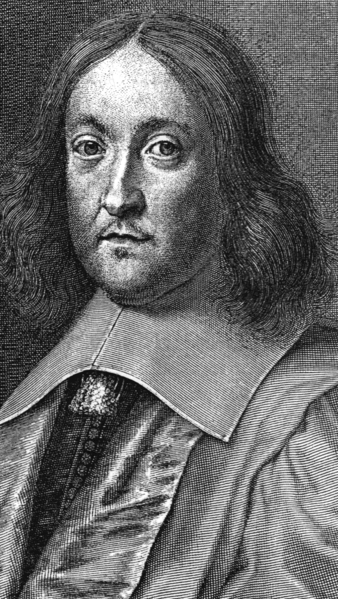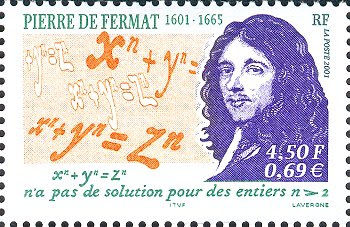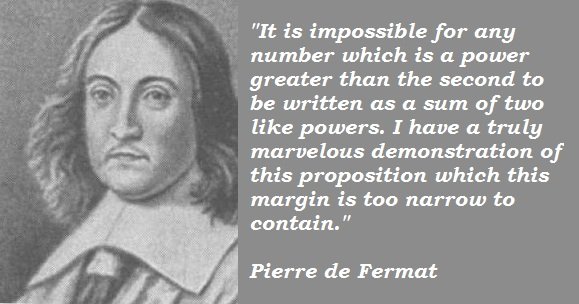Pierre de Fermat and Near-Misses to His Last Theorem

do
you think
Pierre de Fermat
knew about
this
"near miss"
to his
"Last Theorem"?:
73^3 + 144^3 = 150^3 + 1 = 3375001
or
how about
this one?:
13^5 + 16^5 = 17^5 + 12 = 1419869
do you
think
Fermat would
have
been so
confident
in his "conjecture"
had he
known about these
near-misses?
"I was so obsessed by this problem that I was thinking about it all the time - when I woke up in the morning, when I went to sleep at night - and that went on for eight years."
-Andrew Wiles
Fermat's Last Theorem states that x^n + y^n = z^n has no positive integer solutions for x, y and z if n is greater than 2. Although Pierre de Fermat claimed he had a proof for all exponents greater than 2, the only demonstration found penned by his hand is one for the lone “biquad-ratic” case (fourth powers), in which he used one of his favorite “attack” methods against formidable number theory problems: the method of infinite descent. Most mathematicians doubt that Fermat had a proof for all n > 2, especially since the intense and ultra-sophisticated mathematical machinery that British mathematician Andrew Wiles finally had to employ against it was in no way dreamed of back in Fermat's time.

Fermat's Last Theorem is among the world's most famous number theory problems and before Andrew Wiles “solved” it back in 1994, the Guinness Book of World Records listed it as the “most difficult math problem” in the world: “It is impossible for a cube to be the sum of two cubes, a fourth power to be the sum of two fourth powers, or in general for any number that is a power greater than the second to be the sum of two like powers. I have discovered a truly marvelous demonstration of this proposition that this margin is too narrow to contain.” -Fermat (translated from Latin)
In approximately 1637, Pierre de Fermat scribbled his “Last Theorem” which is given above in the margin of a copy of Diophantus's book Arithmetica by Bachet underneath a “sum-of-squares” problem, in which Diophantus allowed fractions to be permissible solutions. But concerning his Last Theorem, Fermat was interested in integer solutions exclusively, a practice he initiated into the almost non-existent (at the time) field of number theory.
From the beginning of Fermat's Last Theorem as a famous unsolved problem (“last” in the sense it was the final conjecture of Fermat's that remained unproven since many of his numerical claims came to light), there have been thousands of false proofs claiming to have demonstrated its veracity.
The great Leonard Euler, working in the late 1700's, “proved” the case for exponent 3, but his proof contained minor flaws that others had to repair after his death. (Recently it was discovered the great mathematician Leonardo Fibonacci proved the case for biquadratics (fourth powers) all the way back in 1225(!) in his book Liber quadratorum, even though many scholars overlook this fact when discussing Fermat's Last Theorem.) Soon after, other mathematicians joined in the fun and for the next two hundred years they eradicated certain isolated cases of n, but no one could see a way to eliminate them all. In 1908, a Dr. F. Wolfskehl of Germany donated 100,000 marks of his own money to the first individual who could concoct a rigorous proof of Fermat's Last Theorem; and R. Carmichael commented thus upon what happened next: “The existence of this prize money has called forth a large number of pseudo-solutions of the problem... the number of untrained workers attacking the problem seems to be increasing.”

For three continuous years faulty proofs of the theorem pored in. But during WWI, inflation rose so high in Germany it reduced the once hefty 100-thousand mark prize down to less than half a measly cent – the tiny amount lying there pathetically in a crock where Wolfskehl and his crew had placed it for safe keeping – which helped to sufficiently discourage the many math cranks from sending in additional faulty proofs. Later, when digital computers arrived on the scene, computational efforts took over and soon all prime exponents less than 4*10^6 had been successfully dismissed. Finally Andrew Wiles, a brilliant mathematician based in England who claims never to use computers in his math work, provided a lengthy proof in 1994 that used powerful “elliptic curves,” (although later Wiles had to repair a few gaps in his demonstration with the help of fellow mathematician, Richard Taylor).
Andrew Wiles first encountered Fermat's famous unsolved conjecture in a library in England when he was only ten years old. Due to the simplicity of the problem statement, Wiles grew excited that he could understand a problem so easy to state yet so difficult to prove that it had stumped the best mathematical minds of the last 300 years. Later, after much advanced mathematical training, Andrew Wiles began working seriously on Fermat's Last Theorem and after nearly eight continuous years of secret work in his attic he succeeded in writing out a fully rigorous demonstration for all values greater than 2.
A few more near-misses of Fermat's Last Theorem:
244^3 + 729^3 = 738^3 + 1 = 401947273
334^3 + 438^3 = 495^3 + 1 = 121287376
135^3 + 138^3 = 172^3 – 1 = 5088447
242^3 + 720^3 = 729^3 – 1 = 387420488
Have you heard about the "Beal's conjecture"? If not, please check this out. This conjecture is closely related to the "Fermat's Last Theorem," and I'm really looking forward to watching a proof or a counterexample for this problem.
Yes, I've heard of Beal's, but I need to refresh myself on it. Thanks for commenting!